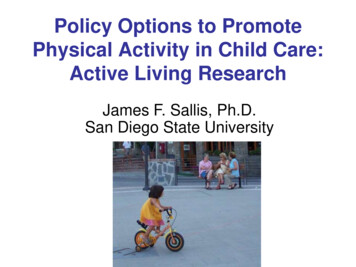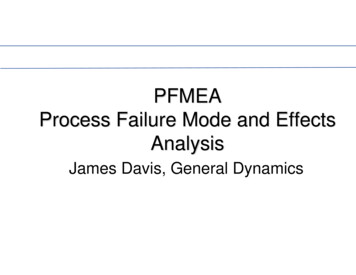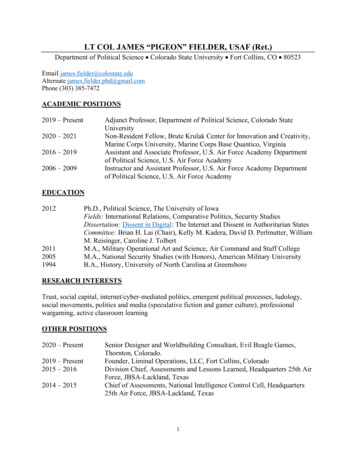
Transcription
Policy Options to PromotePhysical Activity in Child Care:Active Living ResearchJames F. Sallis, Ph.D.San Diego State University
Active Living Research Support research on policy environmentalsolutions to physical inactivity and childhoodobesity Contribute to RWJF’s goal of reversing thechildhood obesity epidemic by 2015 Focus on groups at highest risk–African American, Latino, Native American,Asian/Pacific Islander, lower income Build the evidence base– 27 million in grants through 2012–180 grants awarded so far Use research to inform policy and practice
Child Care PoliciesMultiple Opportunities for Influence Federal– Head Start. Guidelines under development. State licensing laws Local– New York City is a model Need to consider––––breadth of policyfunding & resourcesenforcement & accountabilityevaluation
Survey of Healthy Activity and EatingPractices and Environments in HeadStart (SHAPES)Robert C. Whitaker, MD, MPHProfessor of Pediatrics and Public HealthTemple UniversityPhiladelphia, PAArchives of Pediatrics & Adolescent MedicineDecember 2009
About Head Start Nation’s largest public preschool programAlmost one million low-income childrenIncorporates nutrition and physical activityWell positioned to address obesityprevention No national data describing practices andenvironments related to obesity prevention5
Practices and Environments Related toPhysical Activity1. Structured gross motor activity 30 min/day%742. Unstructured gross motor activity 60 min/day733. Not kept sitting 30 min964. TV and video limited to 60min/day908. Use an available curriculum on gross motor activity546
Practices and Environments Related toPhysical Activity9. On-site outdoor play area at every center%89The “average” outdoor play area had 10. large open area for group games9811. natural elements, such as trees or slopes5812. large shaded space for group games7013. enough fixed play equipment9314. enough portable play equipment9415. enough wheeled toys817
Conclusions The majority of Head Start programs haveimplemented practices and environments forencouraging physical activity that go beyond whatis required by federal regulations Next step is to actually observe practices,environments, and physical activity in Head Startcenters8
Evaluated NYC Policy: Article 47L Beth Dixon, PhD, MPHDept of Nutrition, Food Studies, and Public HealthNew York University In January 2007, the NYC Department of Health and MentalHygiene added new physical activity, screen time, andnutrition policies to the NYC Health Code for licensed groupdaycare centers
Physical Activity & Screen Time Policies Daycare centers are encouraged to– Provide 60 min/day of physical activity to children 1year of age– Ensure that 30 of the 60 minutes are structured andguided physical activities for children 3 years of age– Limit sedentary activities to no more than 60 min/day– Avoid use of TV for children 2 years of age– Limit use of TV to 60 min/day of educational programsor programs that promote physical activity for children 2 years of age
Accelerometry Substudy:Preliminary Findings 12 centers; 176 children Accelerometers worn from drop-off to pick-up time on 1day– Average time: 6 1 hour 49% of children met the recommended 60 min/day ofphysical activity
Conclusions Directors thought they were in compliance with the new physicalactivity policies, but results indicate that only half of children meetthe recommended 60 min/d of physical activity. Directors said their major barrier for physical activity was limitedoutdoor space.
Resource From Nemours: “A Guide To Help ChildrenGrow Up Healthy For OrganizationsServing Children and Youth” ads/2009/09/PA-Guidelines2009-sm.pdf
Resources fromwww.activelivingresearch.org
Evaluated NYC Policy: Article 47 In January 2007, the NYC Department of Health and Mental Hygiene added new physical activity, screen time, and nutrition policies to the NYC Health Code for licensed group daycare centers L Beth Dixon, PhD, MPH Dept of Nutrition, Food Studie










